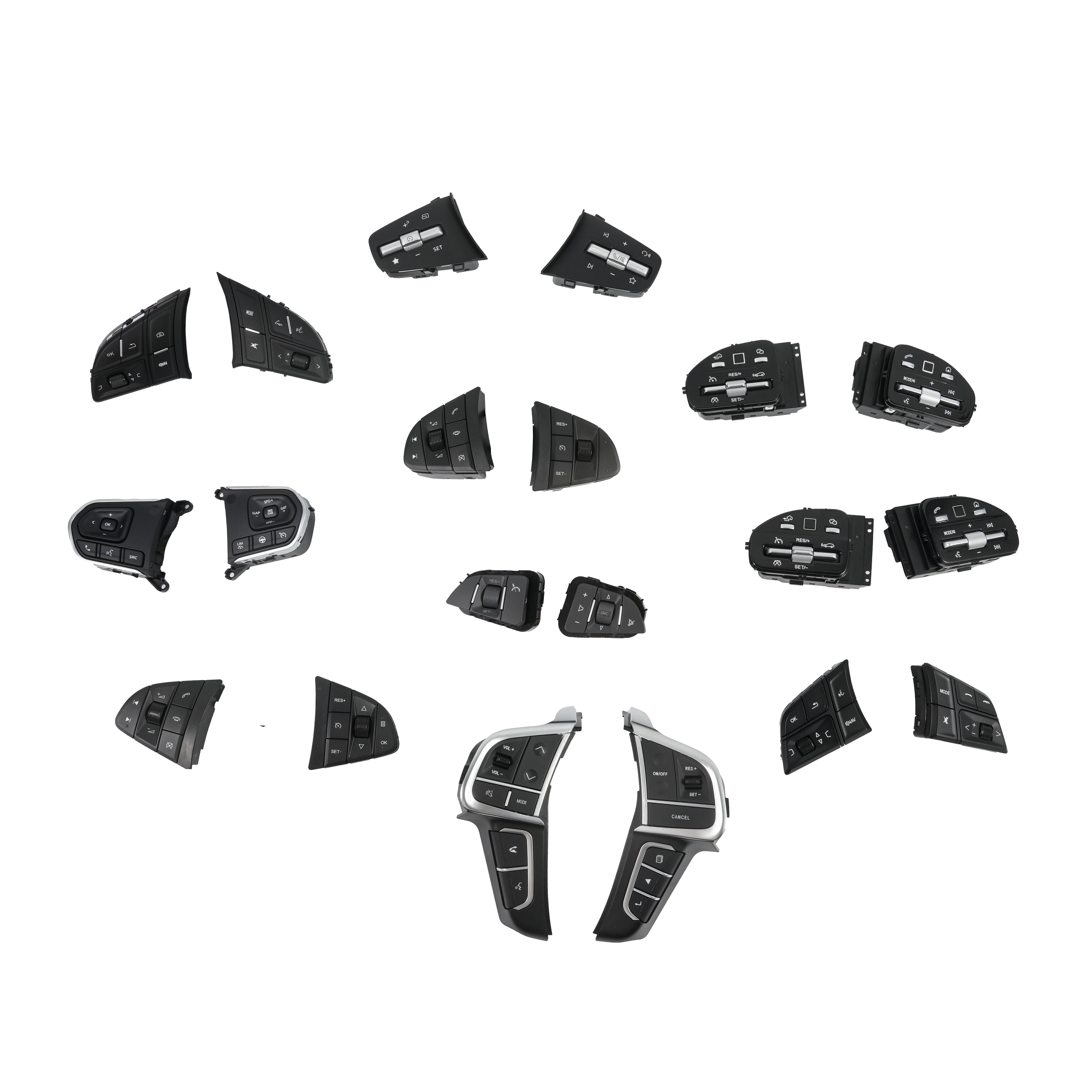In contemporary mobility scenarios, cars have become indispensable partners in people's lives. As the "nerve center" of vehicle control, the steering wheel embodies not only the ingenuity of engineering mechanics but also integrates intricately with the precision design of vehicle switch systems. As an enterprise dedicated to the R&D and manufacturing of automotive switches, we deeply understand the decisive impact of steering wheel quality and its associated components on the driving experience. Today, we delve into the core functions and safety control logic of the steering wheel from a perspective of technical collaboration.

I. Steering Wheel: The Core Hub of Vehicle Control and Interaction
The car steering wheel serves as the driver's "primary interface" for communication with the vehicle. Beyond its core function of directional control, it integrates multiple interactive switch components—from turn signal controls and cruise adjustment to multimedia operation keys. These precision switches efficiently transmit driver commands to various vehicle systems, enabling a "control-feedback" closed-loop. High-quality steering wheel switch components ensure more accurate transmission of steering commands while providing nuanced tactile feedback, helping drivers perceive real-time vehicle dynamics such as road vibrations and steering angles.
II. Engineering Logic and Safety Design of Steering Wheel Control
Scientific Basis of Force Calibration
Steering wheel resistance is not arbitrarily set but meticulously calculated based on ergonomics. When developing associated switch systems, we strictly adhere to SAE International standards: ideally, drivers need only 60%-80% arm strength to complete steering maneuvers. This design prevents operational fatigue while ensuring rapid command response in emergencies—smooth actuation of switch components is key to achieving this balance.
Scenario-Specific Control Adaptation
During straight-line driving, the wheel maintains stable damping feedback, while integrated multifunction switches (e.g., lane-keeping assist buttons) help maintain trajectory. In turns, as steering angles increase, the switch system electronically synchronizes power assist intensity with curve radius and vehicle speed for precise adaptation. Notably, premium steering switches effectively filter operational errors, preventing loss of control due to abrupt maneuvers.
Safety Redundancy in Complex Environments
On rain-slicked or snowy roads, steering feedback force dynamically adjusts via electronic power assist systems. Meanwhile, sensor switches monitor road conditions in real-time to inform force calibration. This "environment-switch-execution" linkage ensures tire grip while optimizing switch triggering logic to enhance safety in extreme conditions.
III. Maintenance and Upgrades: A Manufacturing Perspective
As a specialized automotive switch manufacturer, Shanghai Kai Automotive Electric prioritizes system synergy. Factors influencing steering feel extend beyond vehicle type and suspension—they critically depend on switch component wear. Abnormal steering resistance may signal oxidized switch contacts or delayed power assist signal transmission. Timely replacement with OEM-matched switch components effectively restores control precision.
Today’s steering wheel has evolved from a mere mechanical device into an integrated system blending mechanics, electronic switches, and intelligent algorithms. As a core contributor to this system, we uphold standards of "precision, reliability, and user-centricity," empowering every turn with high-quality switch components. Whether prioritizing control accuracy for younger drivers or ease-of-use for seniors, premium steering systems strike the perfect balance—a true fusion of automotive engineering and human-centric design.